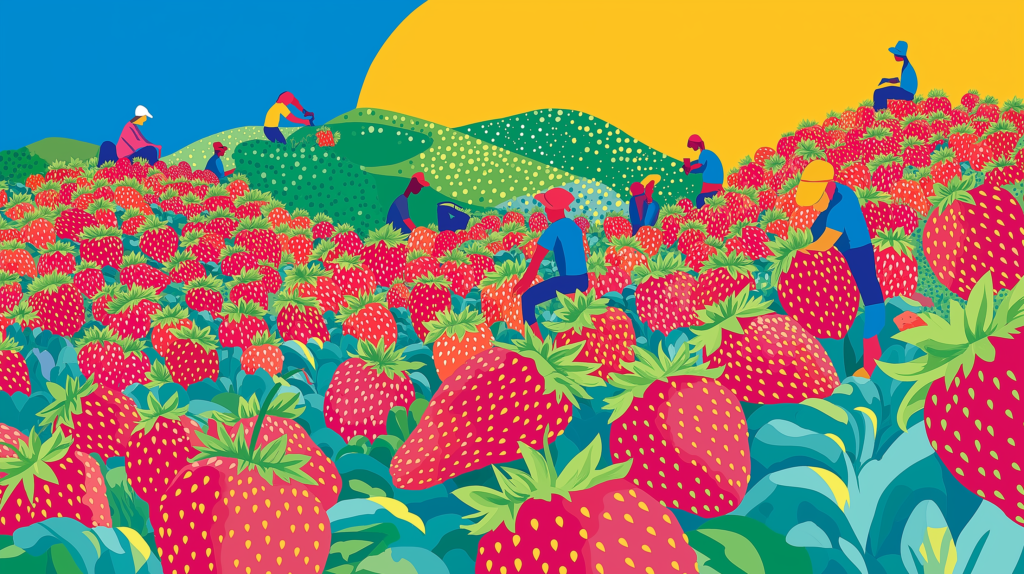Reducing Food Waste in Cold Chain Logistics
When it comes to managing food waste in the cold supply chain, especially with perishables like fruits and vegetables, the challenge is significant but solvable. By making use of the...
Managing Food Waste in Cold Chain Logistics: Challenges and Solutions for the Food & Beverage Industry
On October 28, 2024
When it comes to managing food waste in the cold supply chain, especially with perishables like fruits and vegetables, the challenge is significant but solvable. By making use of the right technology and processes, you can make a substantial impact on reducing waste, cutting down on operational inefficiencies, and improving customer satisfaction.

Global Food Waste: How Inefficiencies in the Supply Chain Impact Perishables Like Fruits and Vegetables
According to the United Nations Food and Agricultural Organization, about a third of all food produced globally is wasted. This means that as you work through the supply chain process—whether the food is sitting on shelves, in storage, or even in your own fridge—large amounts of perfectly edible food are being lost. Given the millions of people worldwide who suffer from food insecurity, it’s critical to address this issue with urgency.
Cold Storage Efficiency: Reducing Food Spoilage with Better Refrigeration and Data
To put it into perspective, a study conducted by the University of Michigan found that half of the global food waste (around 620 million metric tons annually) could be avoided if the supply chain were fully refrigerated. Efficient cold storage could extend the shelf life of food, reduce greenhouse gas emissions from spoiled products, and ultimately help tackle waste on a global scale.
Never miss a story. Stay updated about Rebus news as it happens.
The Vulnerability of Fruits and Vegetables: Why Rapid Cold Storage is Essential to Minimize Waste
Items like fruits and vegetables are some of the most vulnerable to quick spoilage. These items, especially when not properly stored at the right temperatures, can go from fresh to inedible in a matter of days. For instance, think about the berries you buy fresh on Monday, which can start to show signs of spoilage just a week later. This rapid degradation highlights the need to chill produce as soon as possible after harvest. Every hour saved in getting fruit from the field to a refrigerated environment can add an entire day to its shelf life.
The technology and systems in place for tracking food waste, however, have often been reactive rather than proactive. You may have seen it in your own business: daily reports pulled together by a single employee, which are often outdated by the time they’re complete. The data becomes more directional than actionable, leading to inefficiencies and a higher risk of spoilage.
So how can you address this? Here’s how we helped one of our Rebus customers reduce food waste and improve its cold chain management.
Cold Chain Challenge: How Misaligned Data Leads to Food Spoilage and Rejected Shipments
For one of our customers, food waste became a significant problem due to misaligned processes. They had large volumes of fruit moving through their cold storage, with multiple customers, each with different requirements around freshness and inventory management. In many cases, these customers operated on a first-in, first-out (FIFO) system, but there were complications in tracking the freshness grades of items in real-time.
As a result, trucks were regularly being rejected by customers for not meeting their specific freshness standards. The product was being sent back, leading to significant waste—not just in terms of food, but also in productivity and transportation costs. Beyond that, the rejected loads meant frustrated customers and lost business.
The Solution: Real-Time Data Tracking to Minimize Food Waste in the Food & Beverage Supply Chain
The key to solving this issue lay in automation and real-time visibility. With Rebus, we designed an algorithm that collected data from the moment an order was placed, through to when it was shipped. This included tracking what was picked, what inventory was available, and how long the products had been in storage. By processing this data every 15 minutes, the system could provide up-to-the-minute updates on inventory and freshness, allowing for proactive management.
Here’s where the benefits really start to show: before implementing this solution, the customer had to rely on a senior staff member to manually compile these reports, spending up to four hours a day doing so. With Rebus, this same process now takes just a few minutes, and the data is available on demand rather than just once a day.
Within weeks of implementing the system, we saw significant improvements. Initially, the customer had only been able to meet their freshness standards 76% of the time, meaning 24% of their shipments were being rejected. After just a couple of weeks with Rebus, that number jumped to 86%, and eventually, they achieved a 95% success rate. That’s a 20% improvement in correct shipments, with far fewer rejections and a major reduction in waste.
The Benefits of Real-Time Cold Chain Data: Enhancing Customer Satisfaction and Reducing Rejections
One of the greatest advantages of real-time data tracking is the ability to take proactive measures. When a mis-shipment occurs, you can immediately see which pallets were affected, notify your customer, and even arrange to have the correct product shipped out right away. This turns what could have been a major issue into an opportunity to improve customer satisfaction. Instead of receiving a surprise rejection, customers now know exactly what’s happening and how you’re working to fix it.
Expanding Efficiency Beyond Fresh Produce: Real-Time Data Solutions for Meat, Frozen Goods, and More
The fruit rotation widget developed for this specific use case shows just how much potential there is for using real-time data to reduce waste. But its applications go far beyond fruits and vegetables. This same technology can be used across many different product categories, helping to extend the life of everything from fresh meat to frozen goods.
As the cold chain continues to grow, with more investment in refrigerated storage and distribution, leveraging real-time data tools like Rebus helps you to stay ahead of the curve. Whether you’re managing inventory, coordinating shipments, or trying to meet customer demands, real-time visibility into your supply chain can make all the difference in reducing waste, increasing
How to reduce waste in cold chain logistics:
- Implement Real-Time Monitoring
- Optimize Inventory Management: FIFO (First In, First Out)
- Streamline Processes with Automation
- Leverage Data Analytics
- Enhance Staff Training
Conclusion
So, if you’re still relying on manual data reports and outdated systems, it’s time to rethink your approach. Embrace the power of automation, and start making smarter, faster decisions that can help your business grow while cutting down on waste.
Ready to take the next step? Learn how our food and beverage inventory management solutions can help you optimize operations and reduce waste.








